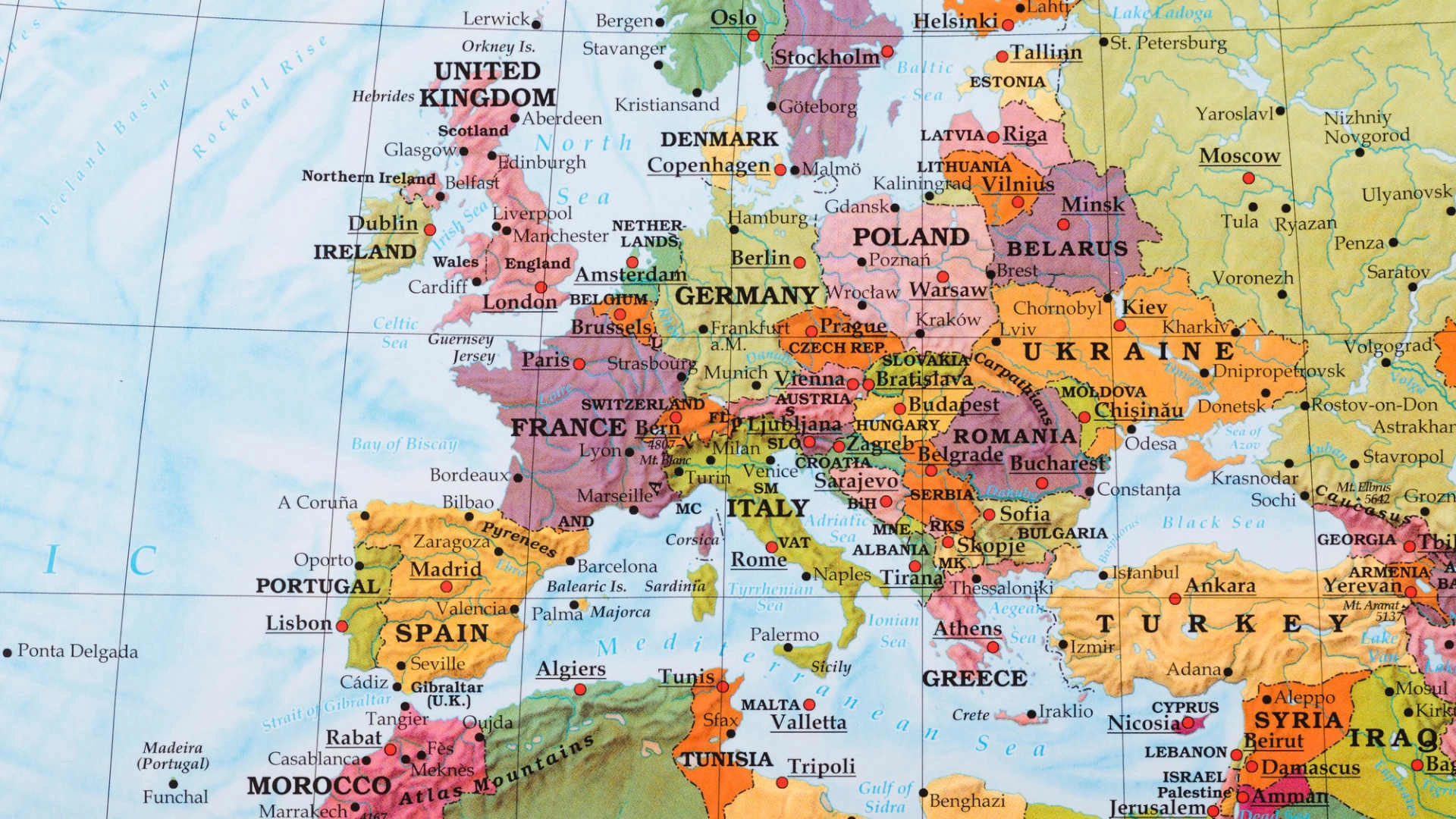
Insights into natural gas consumption in Europe
Starting with the big picture: global energy consumption
Natural gas is widely used for heating, electricity production, and transportation, so it plays a crucial role in various sectors.
Before exploring natural gas consumption in Europe, it is crucial to grasp the broader context of global energy usage. The chart below illustrates the exponential rise in global energy consumption since the Industrial Revolution, with the current annual growth rate hovering around 1-2%.
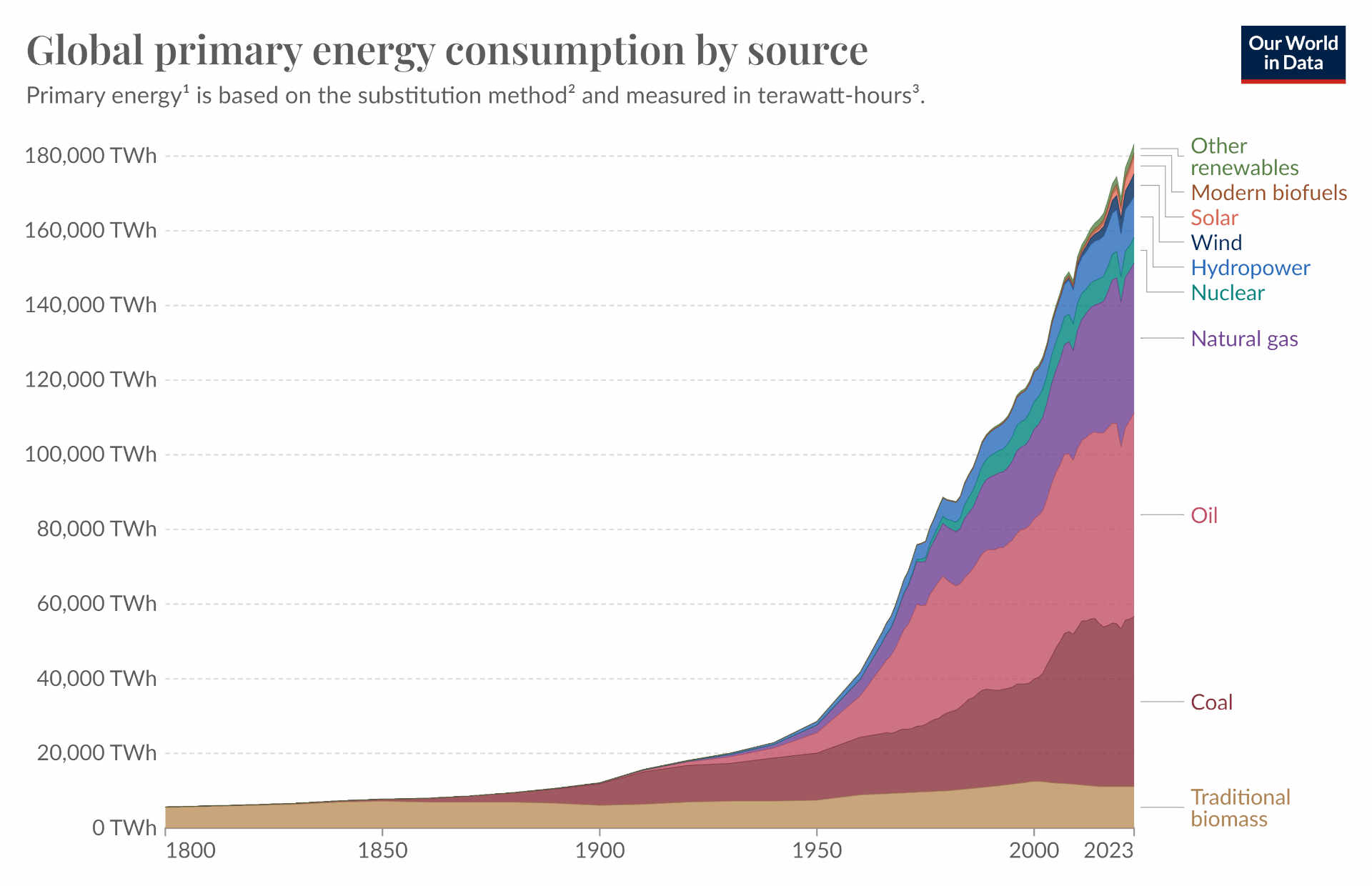
Energy demand continues to rise due to factors like:
- global population growth,
- economic development,
- industrial progress in developing nations.
The swift escalation in energy demand presents challenges in adopting green technology. This is where natural gas, the cleanest fossil fuel, emerges as a viable solution. It facilitates a smoother transition to green energy sources while ensuring energy security and reliability for nations.
The chart below depicts the energy consumption of various nations, encompassing all usage sectors, including heating, transportation, and electricity production.
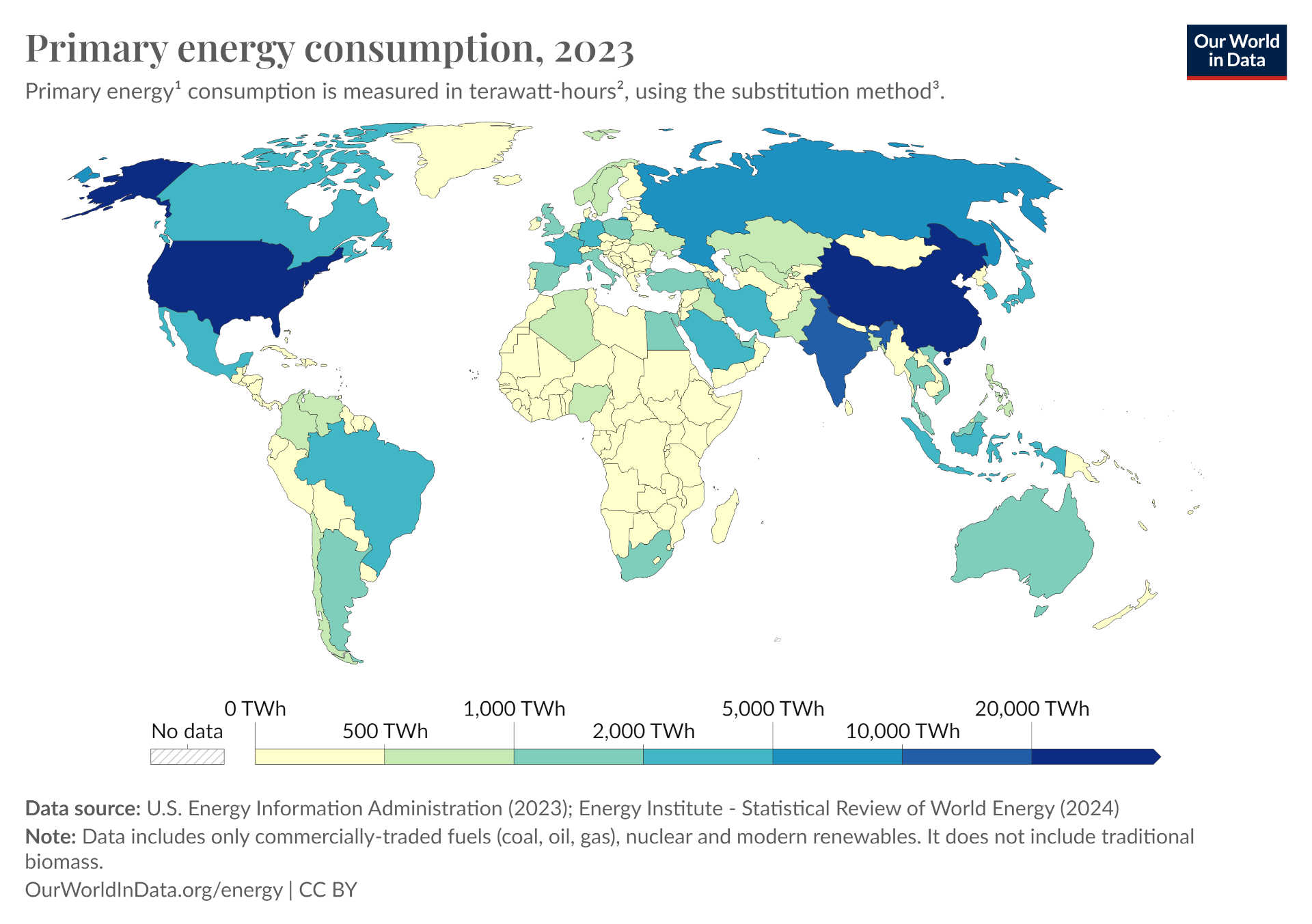
While the above chart offers valuable insights, it does not provide us with the full picture. To gain a more accurate understanding of average energy usage, we must consider the population of countries. The following chart illustrates energy consumption per capita.
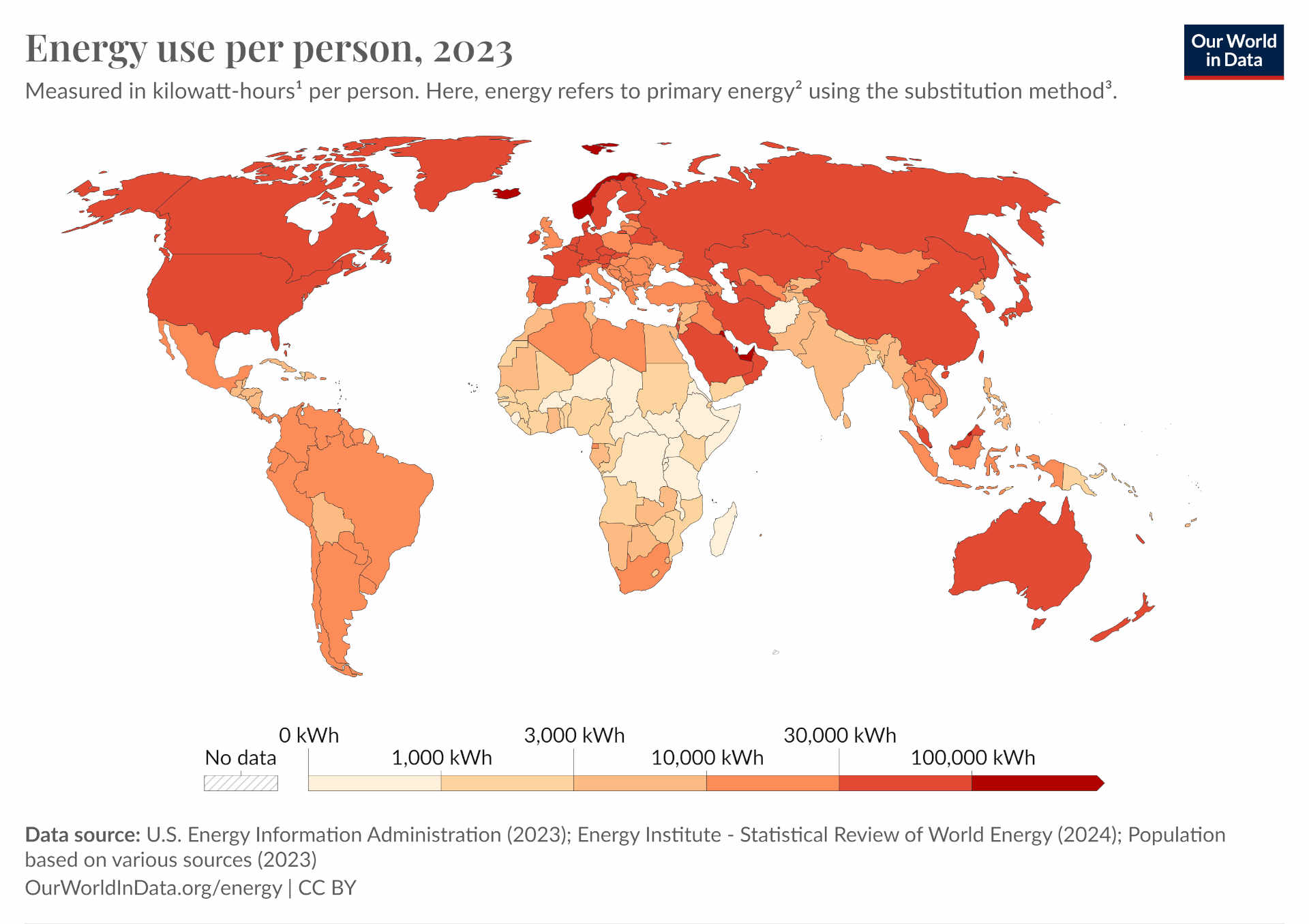
Europe's energy mix
In 2021, Europe consumed 81,141,883 terajoules of energy, representing 13% of the global share. Interestingly, the continent's energy supply is not following the global growth trend; it has decreased by 4% compared to 2000.
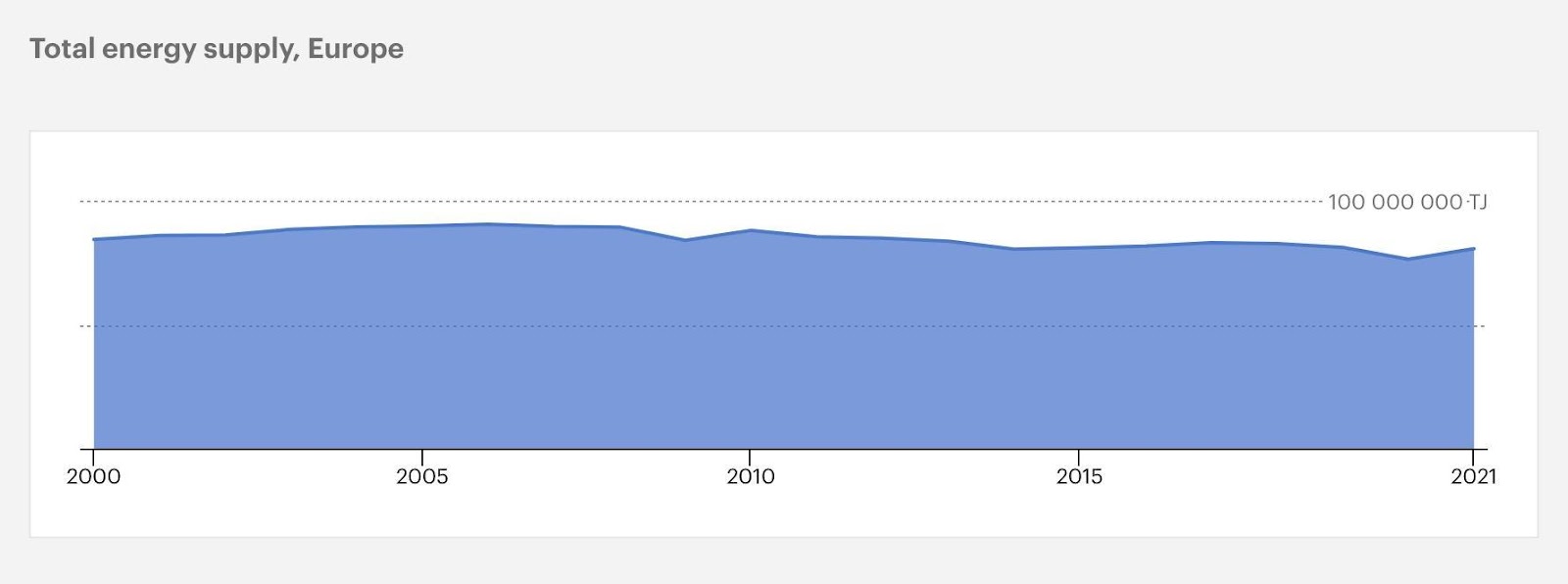
Countries' energy consumption varies based on factors such as population, economic development, policies, and more. Here are the top 10 energy consumers in Europe.
- Germany: 12,055,470 TJ, 14.9%
- France: 9,857,049 TJ, 12.1%
- Turkey: 6,674,923 TJ, 8.2%
- United Kingdom: 6,645,695 TJ, 8.2%
- Italy: 6,259,768 TJ, 7.7%
- Spain: 4,836,453 TJ, 6.0%
- Poland: 4,521,665 TJ, 5.6%
- Ukraine: 3,691,707 TJ, 4.5%
- The Netherlands: 2,978,835 TJ, 3.7%
- Belgium: 2,325,114 TJ, 2.9%
But where does the energy come from in European countries? The two major sources are:
- oil (30.5%) and
- natural gas (26.7%).
The chart below illustrates the total energy supply by sources for Europe in 2021.

Natural gas consumption in Europe: trends, impacts, and factors driving energy usage
Natural gas is vital for Europe's economy and progression. Here are some key insights based on 2021 IEA data:
- Natural gas consumption in Europe totaled 21,676,057 TJ.
- 26.7% of the energy supply in Europe came from natural gas.
- 15% of the global natural gas supply is used in Europe.
- There has been a slight increase in natural gas consumption in Europe. As the below chart shows, there was a 4% increase in 2021 compared to 2000.
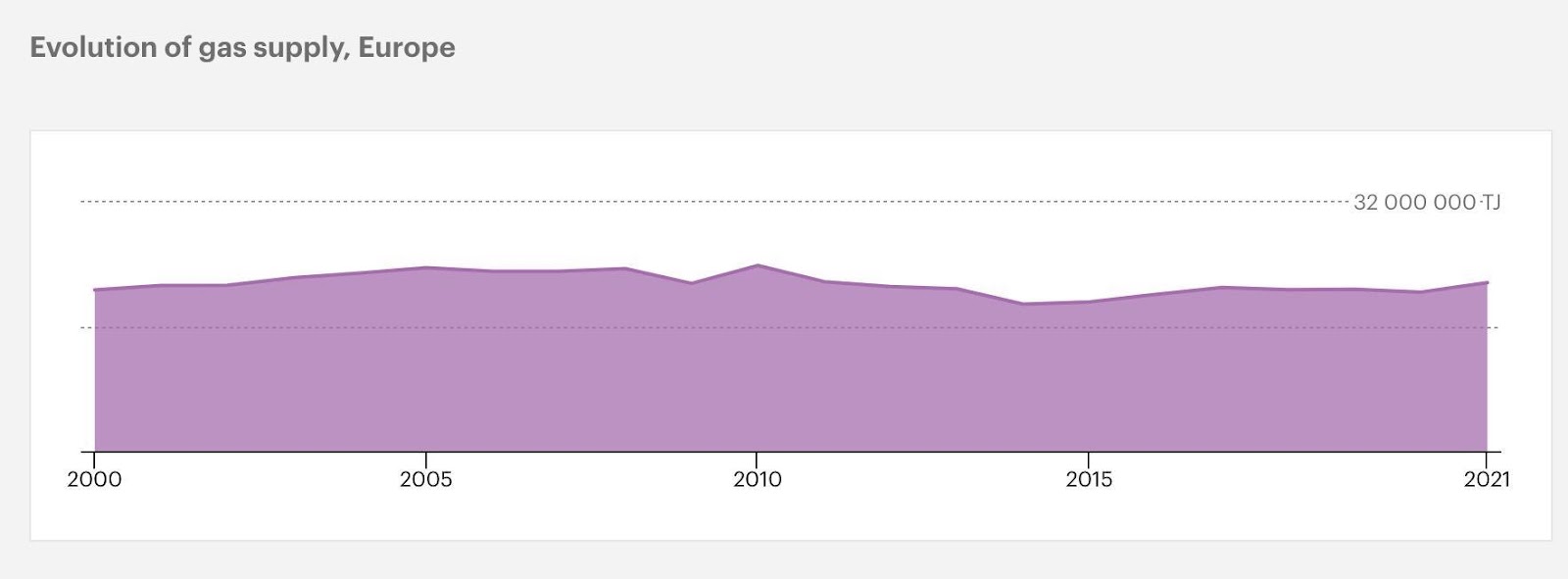
Natural gas usage varies greatly among European countries, here are the top 10 consumers.
- Germany: 3,270,023 TJ, 15.1%
- United Kingdom: 2,754,906 TJ, 12.7%
- Italy: 2,613,837 TJ, 12.1%
- Turkey: 2,056,454 TJ, 9.5%
- France: 1,549,490 TJ, 7.1%
- The Netherlands: 1,262,068 TJ, 5.8%
- Spain: 1,231,621 TJ, 5.7%
- Ukraine: 1,000,885 TJ, 4.6%
- Poland: 763,282 TJ, 3.5%
- Belarus: 645,444 TJ, 3.0%
Generating electricity from natural gas is environmentally friendlier than using coal, emitting fewer pollutants. It also provides exceptional energy safety and reliability, making it a valuable supplement to solar, wind, or hydro energy sources. In 2021, 21.5% of electricity was generated from natural gas.
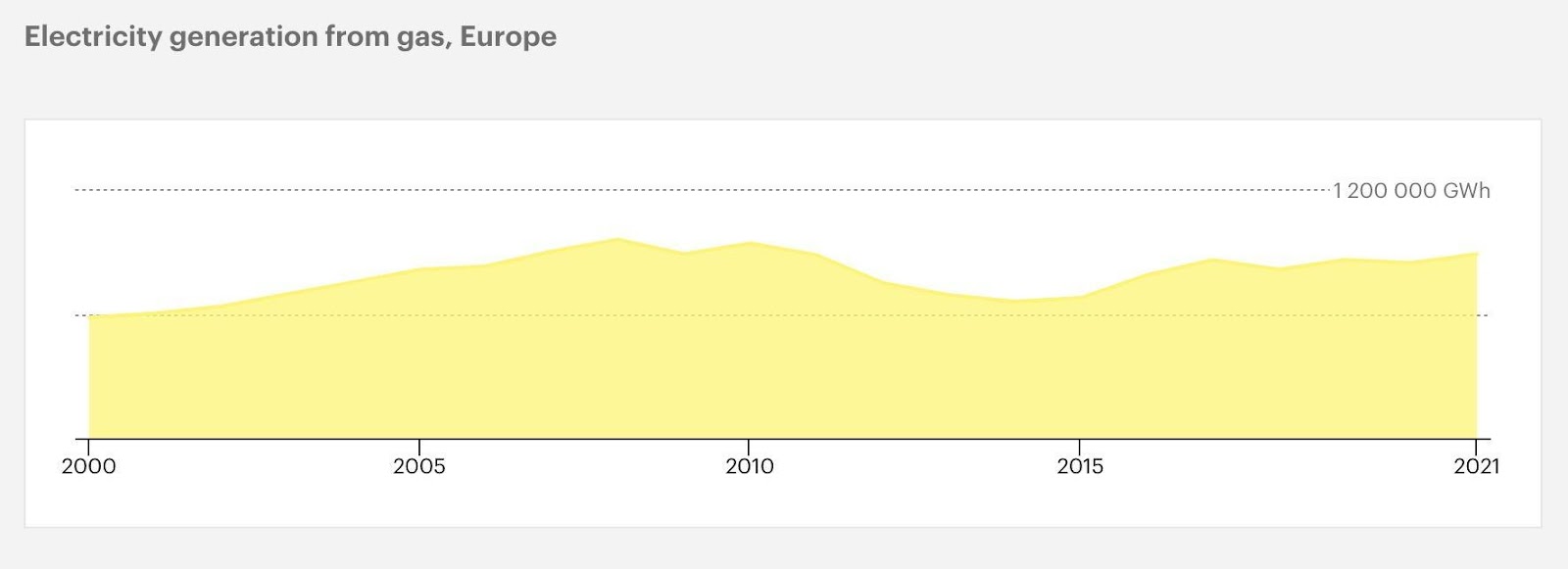
62% of natural gas consumption in Europe is attributed to end customers, encompassing businesses and households alike. It serves various purposes in industry, such as production, and is also used for cooking and heating in homes.
The largest natural gas-using sectors in Europe are residential (42%) and industry (33%). The chart below illustrates natural gas consumption in Europe by sector.

Conclusion
Natural gas ranks as the second most used energy source in Europe. As the greenest fossil fuel, it can accelerate and facilitate our transition to renewable energy sources, thus playing a vital ecological role.
